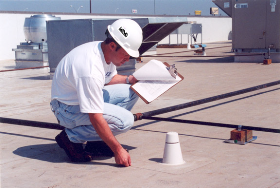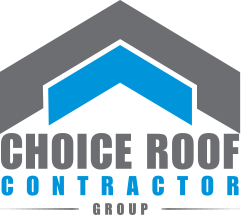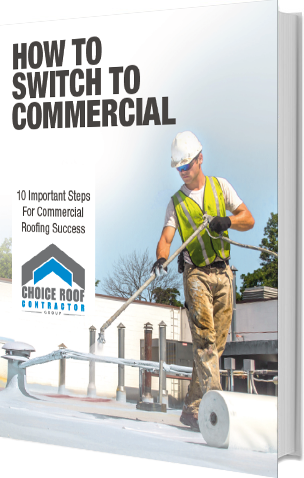Many roofing companies offer free commercial roof inspections. These inspections are oftentimes no-obligation and give commercial roof contractors the opportunity to show building owners their expertise and value.
 However, where many – if not most – contractors differ from each other is the quality of the free inspection they offer. Fly-by-night or less-than-stellar roofing companies may perform roof inspections that are quick or hardly comprehensive in order to increase their number of bids within an area or seemingly maximize their time. But any roof inspection that is done too quickly or anything less than the utmost awareness and precision can spell disaster for a building owner’s needs. After all, if a roof’s issues or developing problems are not identified, then what will prevent those issues from arising in the short-run or long-run?
However, where many – if not most – contractors differ from each other is the quality of the free inspection they offer. Fly-by-night or less-than-stellar roofing companies may perform roof inspections that are quick or hardly comprehensive in order to increase their number of bids within an area or seemingly maximize their time. But any roof inspection that is done too quickly or anything less than the utmost awareness and precision can spell disaster for a building owner’s needs. After all, if a roof’s issues or developing problems are not identified, then what will prevent those issues from arising in the short-run or long-run?
Below, we cover 9 steps for how Choice Roof Contractors complete in-depth roof inspections with building owners’ needs in mind.
Steps for How to Inspect a Commercial Roof
1. Determining if the roof has any guarantees that are active. Before performing any work, a reputable contractor will determine whether or not a roof has an active guarantee. After all, the guarantee’s terms may spell out key details that can influence any work the contractor would perform, such as the types of roofing products that can be or cannot be used on an existing roof. Should a roof contractor not abide by these terms, the guarantee would very likely be invalidated.2. Closely examining building records and interviewing the building’s occupants. As is common sense, any existing plans of a building’s layout will be tremendously helpful in assessing a roof’s condition. A savvy roofing company would therefore seek out any original plans and specifications. Additionally, another key component of interacting with the building’s occupants and asking if they know of any current or prospective issues. Do they know of any leaks? If so, how often does the roof leak? In what weather conditions does the leaking appear? How long has the leak been taking place? Asking as many questions as possible to gauge the situation is crucial.
3. Carefully inspecting the roof’s interior system. Having completed the second step, a reliable commercial roof contractor would then closely examine and evaluate the roof’s interior system. Among other things, he will be looking for signs of rust or water stains, structural defects, noticeable corrosion or weaknesses, and the type and condition of mechanical fasteners that come from the roof deck. Known roofing leaks should also be examined inside of the building for determination of the leak source or presence of any issues such as roof splits. Aside from this inspection component’s value in the possible early identification of any issues, this step will also let the contractor know of which areas he should be careful traversing.
4. Inspecting the building envelope. Before proceeding to the roof’s top deck, a commercial roof contractor should make a general inspection of the building envelope. The presence of out-of-the-ordinary defects, such as pre-cast panels tilting or cracks in building features around corners, window openings, or doors may be evidence of structural movement or structural problems. These features will vary from building to building, of course. Any indicators of water entry along the building features such as the building’s masonry should also be taken note of for determining if anything may be wrong with the building’s gutters, down spots, or other relevant building features.
5. Inspecting the rooftop. Now is the time for the contractor to switch his efforts to the top of the building. The information he gained from the original plans and specifications will be invaluable here. A close inspection of the rooftop will begin with a general lookover of the rooftop for any debris, standing pools of water, signs of abuse or wear-and-tear, or even vegetation, as these can be indicators of long-term problems.
6. Inspecting the roof perimeter and then the roof field. Once the general overview is finished, a contractor should examine the roof perimeter as that is where most leaks and other roof problems occur. In this stage, things such as counter flashings, base flashings, coping, and coping joints will be closely examined. A roof contractor will also examine the gutters. Once the perimeter check is complete, the roof’s main body is next. Pools of water can be indicators of poor roof design or construction. Should the roof be a membranous roof like an EPDM roof, the contractor will examine the membrane’s surface for its condition. Are there any signs of debris or dirt build-up? Any signs of excessive or lacking amounts of surfacing layers such as gravel? A careful contractor will take note of all small details, as they can be clues to any issues at play.
7. Inspecting roof-based accessories and equipment. Sometimes leaks can come from equipment or accessories that have been poorly installed or are in poor condition. A careful roof contractor will examine areas including drains, seals, flashing, and other key areas as is relevant to that particular roof’s type.
8. Determining multiple options for action. Once a contractor has completed all of these steps, he then comes up with solutions that are tailored toward the roof’s specific needs. A customer needs-focused contractor will present the building owner with multiple options that can fit his needs, make suggestions as to which are the best, and offer that advisement with the building owner’s budgetary concerns in mind. This is where the roof contractor can show the building owner what he can bring to the table.
9. Submitting a proposal for the agreed-upon roofing solutions. Should the building owner be impressed with the roof contractor’s assessment and expertise, the contractor can then move forward with a proposal for action. The solutions agreed upon will include quotes for work to be done, estimated times of project initiation and completion, and other key details.
Choice Roof Contractors abide by these strict quality standards in their roof inspections as well as all other facets of their commercial roof services. Call us today at 800-670-5583 to learn why one of our standout network members can be the perfect fit for your needs and wallet.



